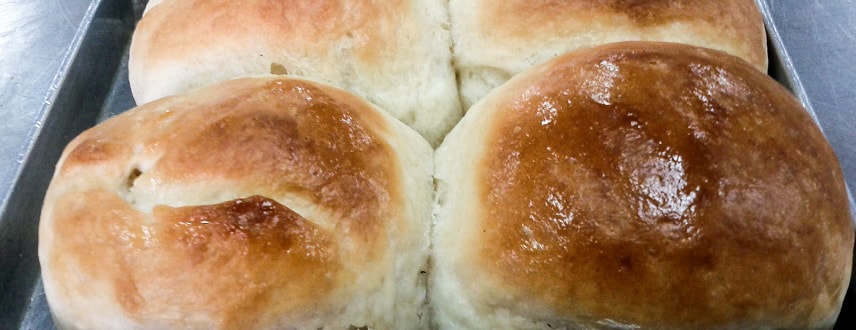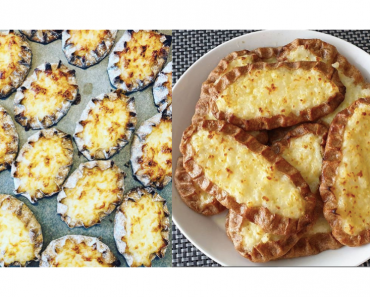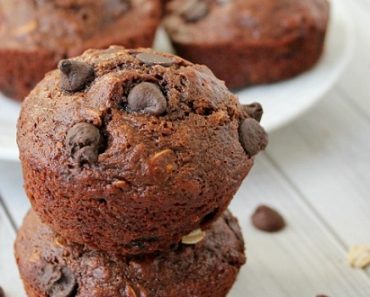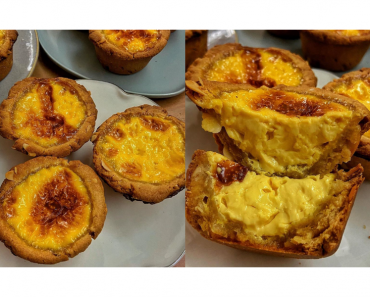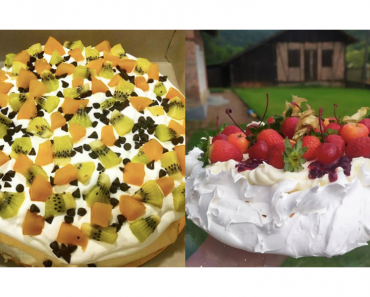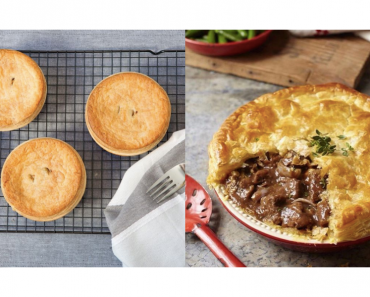The Pav or popularly known as bun are nothing but the Indian bread rolls. They are soft to eat and have spongy texture. They puff up when they are baked and become fluffy. They have shiny, smooth and creamy surface. This Pav Recipe makes the Indian Bread Rolls with the combination of all-purpose flour and whole wheat flour. This soft to eat homemade bun is also hearty and tasty.
Get Daily Dose of Delicious Recipes… Subscribe Now!
This version of Pav Recipe is much quicker and healthier as compared with other varieties. The soft and smooth Pav are the small tiny portions of whole bread. These circular shaped Pav are one kind of small loaf of bread. The Pav is also called as Pao at many places. The preparation of the Pao uses the yeast. The addition of dry active yeast makes the Pao rise and doubles the bread loaves.
The Pav Recipe can be made with instant or homemade yeast. In India, these doubled Pav are also known as double roti or double bread. The fluffy buns are too soft and too tasty, once you make it you will look always forward to making it again and again. This is the basic Pav recipe which is made from the two sieved flours.
You can also make the Pav from only whole wheat flour or only all-purpose flour. Using the two flours in the Pav dough improves the taste as well the texture of these baked buns. Using the two flours in half and half ratio also avoids the Pav from becoming chewy. It does not make the Pav too dense and gives a smooth texture. You can also tweak with the regular Pav Recipe and add some stuffing in the Pav.
Remarks:
- Kneading the dough is time-taking and also needs little attention.
- If the dough is too tight, add some warm water and knead again.
- If the dough is too loose, add some flour (any flour) and knead again.
- If the dough is too hard, add some warm water and knead again.
- If the dough is too sticky, add some flour (any flour) and knead again.
- Be careful and check that the surface of the bread does not become brown.
- These baked bun or Pav can be stored in fridge for a week. They can stay edible for 3 to 4 days if kept in room temperature.
- Use a good quality yeast. If it is out of its shelf life, then it won’t become frothy.
- You can also add milk powder in this recipe if you are adding milk.
- You can also use honey instead of sugar for the proofing of yeast. Mix in the hone in the warm milk and pour in to the flour mix.
Garnishing Ideas:
Once the buns are baked, give their surface a shiny and glazy texture. Brush the baked buns with the melted butter or little oil.
Serving Suggestions:
The homemade plain puffed up Pav perfectly pairs well with the tasty restaurant like Pav Bhaji. It is the Indian most favourite bread which you can have it plain or with tomato ketchup. It can be used to make the Misal Pav, Masala Pav or Vada Pav. You can also eat it with homemade salted butter for your breakfast.
The baked buns go well with any kind of Chutney or homemade salted Butter. Many people like to their gravy sabzi with buns or bread. This feather-soft bun tastes best when you have it with any spicy curry dish. You can also serve it as sandwich packed with Potato Pakora or any other fried fritters.
Quick Tip:
- You can also bake each small Pav or Bun separately.
- You can store the leftover dough, and make the Masala Bun (Masala Pav) next day.
- Baking the Pav individually prevents touching of each Pav with the other.
- Place the aluminium foil or butter paper over the browned surface of bun while baking.
- The electric mixer with the paddle attachment kneads the dough easily and quickly.
- You can knead the dough with the in the food processor well.
- For the hot weathers, keep the buns in the fridge.
- For the cold climate, you can keep the baked buns are room temperature.
- You can warm the refrigerate buns in the microwave for few seconds before serving.
- Adding gluten does make a difference in the taste and texture of the Pav.
It is very important to bake the buns without burning them. This Pav Recipe is completely vegetarian as it not use eggs. Also, it is low on calories as there is no butter or milk used to make these soft and light weight buns. You can also be flexible with the size of the buns. You can shape them in any shape of your choice as well you can make bigger buns as well. The small sized Pav are simple to bakes and easy to eat.
These small sized Pav of the bread load is the most common type of bread loaf available in Indian stores. Though the packets of Pav are available in all the bakery shops, but it is always preferable to prepare the Pav at home. There is something special about the homemade baked bakery items. The buns prepared at home can never beat the taste and texture of the buns bought from bakery. You can prepare healthy Pav at home with your choice of ingredients.
As you use fresh flours, the homemade Pav is also hygienic. Whenever you are in hurry, you can take the option of buying bun from the store. The best part of the bun prepared at home is, you can store it and east it whenever you wish to. It’s always better to bake bun at home rather than finding your favourite Pav Bread at each and every bakery shop. The home prepared Pav is much softer and tastier than the one brought from the market. It is also fresh and has longer shelf life than the store-bought buns.
The puffy Pav recipe is a special Indian bread made to eat with various Indian snacks. It is soft, spongy, smooth, airy, savoury and very flavourful. The spongy bakery buns can be baked with eggs. But this an eggless Pav Recipe where you make the Pav at home without eggs. These airy and fluffy buns are prepare at home without eggs. Once you know how to make Pav at home, you can make it often to eat with various dishes. Who does not like eating the delicious and spicy Pav Bhaji? It is the most favourite street food of every family.
The Pav Bhaji is incomplete with the side dish of homemade Pav Buns. You can eat it with roti or paratha, but the combination of Bhaji with the Pav is totally different. You may eat Bhaji with plain Pav or the masala Pav. The homemade Pav or the buns has the nice salty, buttery and savoury flavour. It is extremely soft and easily melts in a mouth. Their fluffy texture makes them spongy and a fun to eat food. You can try to make Pav with basic wheat flour or with Maida.
Whichever way you will make, the Pav will turn out be super spongy and soft if you have proper proof the yeast. The taste and flavours of the Pav will depend on your dough mixture. Your kids will enjoy eating the bun if they are fluffy and they puff up well. Though any one can easily bake the bun at home, but it is little tricky to proof the yeast. With little practice, you can bake the fresh buns at home within minutes. The key for proofing is to use the warm water and not too hot water. It must be warm enough to touch and then add yeast with sugar.
Some Points to Take Care While Baking Pav:
- You must warm the water pan or in a microwave for some seconds and add yeast along with sugar in it. Set this mixture aside for a while to get perfectly foamy yeast mix.
- If you are proofing the yeast with the milk instead of water, then always use the full fat milk. The fat residing in the milk helps to active the dry yeast.
- For all the eggetarian, you can brush the baked buns with egg yolk. You can also spread little egg yolk over the buns before baking them, it will make them shiny and give golden texture.
- For all the vegetarians, you can brush the baked bun with the butter or oil. You can also spread little milk over the buns before baking them, it will give the glazy look.

